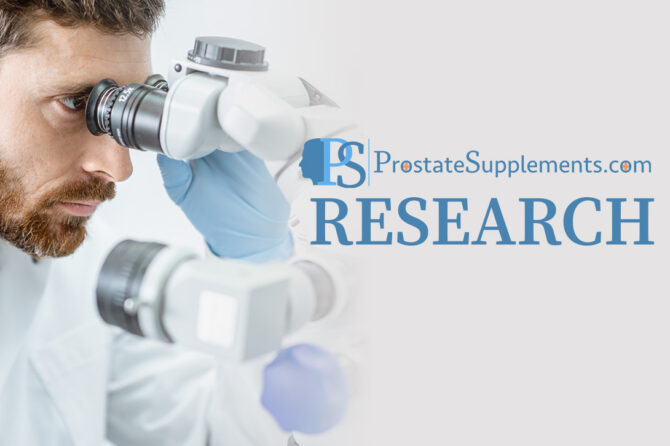
Oscillococcinum: Composition, Evidence, Safety, and (the Lack of) Men’s, Prostate, and Urinary Health Effects
Abstract
Oscillococcinum is a homeopathic over-the-counter (OTC) product marketed primarily for “flu-like symptoms.” It is prepared by serial dilution (200C/200CK) of an extract labeled Anas barbariae, hepatis et cordis extractum (duck liver/heart) into sucrose/lactose pellets. High-quality evidence does not support efficacy beyond placebo for preventing influenza or meaningfully treating flu-like illness, and there is no clinical evidence linking Oscillococcinum to men’s health, prostate health, or urinary outcomes. Safety concerns are generally low due to extreme dilution, though each dose is essentially sugar (≈1 g), which may be relevant for people limiting simple carbohydrates or with lactose intolerance.
1) What Oscillococcinum Is
- Formulation. Melt-away pellets containing sucrose and lactose; labeled active: Anas barbariae, hepatis et cordis extractum 200CK HPUS. Each single-use tube (≈1 g) contains ≈1 g sugar.
- Homeopathic dilution. “200CK/200C” denotes 200 sequential 1:100 dilutions with succussion, a concentration so extreme that no molecules of the starting material are expected to remain. Regulatory labeling also notes the product is an unapproved homeopathic drug and that the FDA is not aware of scientific evidence supporting homeopathy as effective.
- Labeled use. Temporary relief of non-specific “flu-like symptoms” (aches, fever, chills, fatigue); not evaluated by FDA for safety or efficacy.
2) Proposed Mechanisms (and Scientific Plausibility)
Homeopathy relies on two principles—“like cures like” and “potentization” via serial dilution. These premises are not consistent with established pharmacology or chemistry at ultra-molecular dilutions (e.g., 200C). Accordingly, any observed effects would be expected to track placebo responses rather than dose-dependent pharmacologic action.
3) Clinical Evidence: What High-Quality Reviews Show
- Prevention of influenza. Systematic reviews (including Cochrane reviews) find no reliable evidence that Oscillococcinum prevents influenza or influenza-like illness. Earlier meta-analyses suggested at best equivocal signals with methodologic limitations; overall certainty is low to very low.
- Treatment of influenza-like illness. Most research concludes evidence is insufficient to support clinically meaningful benefit; any apparent reduction in symptom duration is small, imprecise, and derived from low-quality trials.
- Men’s health, prostate, urinary outcomes. There are no randomized trials or credible observational data demonstrating benefits for benign prostatic hyperplasia (BPH), prostatitis, prostate cancer, lower urinary tract symptoms (LUTS), urinary frequency/urgency, nocturia, or urinary tract infections. Major reviews on Oscillococcinum do not even assess these endpoints, underscoring the absence of evidence.
Bottom line: Evidence does not support Oscillococcinum for prevention or treatment of influenza, and there is no evidence at all for men’s health, prostate, or urinary indications.
4) Safety Profile
- General tolerability. Because of ultra-high dilution, adverse pharmacologic effects are unlikely; reviews found no evidence of clinically important harms in included trials.
- Sugar and lactose content. Each dose is ≈1 g sugar (sucrose + lactose). Individuals managing carbohydrate intake (e.g., diabetes, ketogenic diets) or with lactose intolerance should consider this.
- Regulatory context. Homeopathic drugs marketed in the U.S. are unapproved; FDA applies risk-based enforcement and explicitly notes lack of scientific evidence supporting homeopathy as effective. Quality lapses have triggered enforcement in parts of the homeopathy sector.
5) Uses Claimed vs. Evidence-Based Care
- What it’s sold for: Non-specific “flu-like symptoms.”
- Evidence-based options for flu: Annual vaccination; when clinically indicated, antiviral therapy (e.g., neuraminidase inhibitors) within guideline windows; supportive care with antipyretics/analgesics, hydration, and rest under clinician guidance.
- Men’s/prostate/urinary concerns: Evaluate evidence-based pathways (e.g., α-blockers, 5-α-reductase inhibitors, pelvic floor therapy, lifestyle modification, urologic assessment) depending on diagnosis—not Oscillococcinum, for which no data exist.
6) Ingestion Methods & Dosing (As Labeled)
- Adults & children ≥2 years: At onset of symptoms, dissolve the entire contents of 1 tube in the mouth every 6 hours, up to 3 times per day.
- Children <2 years: Ask a doctor.
- Excipients: lactose, sucrose; each 1-g dose contains 1 g sugar.
- Important label cautions: Do not use if allergic to Oscillococcinum; seek medical care if symptoms persist >3 days or worsen, or if severe features (e.g., shortness of breath) occur. These “uses” have not been evaluated by FDA.
7) Practical Guidance & Counseling Points
- Expectation-setting: If used, set expectations consistent with the evidence: any benefit is unlikely to exceed placebo.
- Do not substitute for indicated care: For influenza risk groups or severe/progressive symptoms, seek medical evaluation promptly; do not delay vaccination or antivirals when appropriate.
- Men’s/prostate/urinary symptoms: There is no evidence that Oscillococcinum helps; consult evidence-based urologic care pathways.
- Sugar/lactose: Consider dietary implications per dose; avoid if intolerant to lactose.
8) Conclusions
Oscillococcinum is an ultra-dilute homeopathic sugar-pellet product whose modern evidence base does not demonstrate efficacy for influenza prevention or clinically meaningful treatment—and no evidence exists for men’s health, prostate, or urinary benefits. Its risk profile is largely tied to excipients (sugar/lactose) rather than pharmacologic action. For flu or urologic concerns, rely on established, guideline-concordant strategies.
Leave a reply

Leave a reply